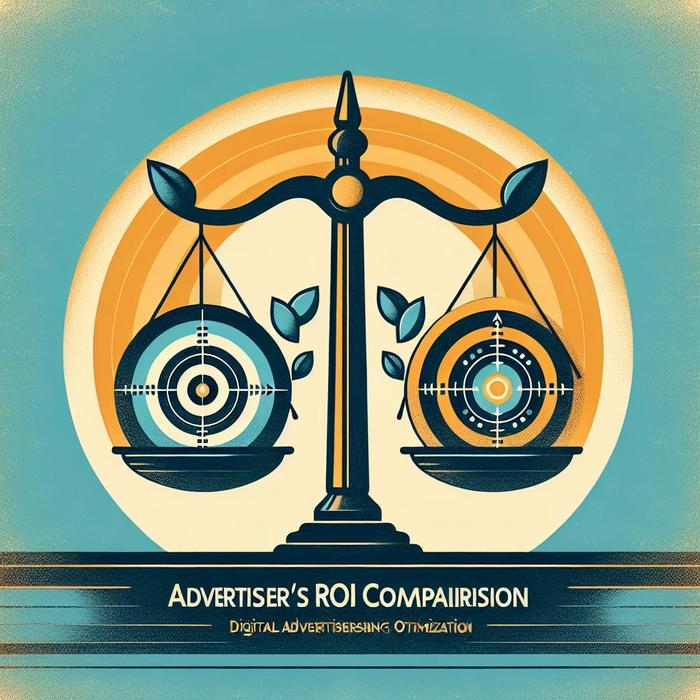Understanding the Framework of Google Ads and Meta Ads
Two platforms stand out – Google Ads and Meta Ads. They command a substantial market share and are instrumental in shaping online marketing trends. In understanding these advertising platforms, it becomes crucial to delve into their guiding principles and evaluate their methodologies.
With Google Ads, you’re centering on a user-centric advertising model that prioritizes real-time Lifetime Value (LTV). Google’s bidding technology aims at optimally targeting potential customers, fueling business growth and customer satisfaction [Read more].
Meta Ads, formerly known as Facebook Ads, operates similarly but has its unique features. Their advertising model leverages real-time LTV and native algorithmic capabilities to offer impression bids to the highest potential customers efficiently. This prioritization of client satisfaction is key to understanding the effectiveness of Meta Ads campaigns [Read more].
Google Ads vs. Meta Ads: A Comprehensive Overview
Targeting Abilities: Google’s strength lies in capturing user intent at various stages of the buying cycle, from information search to decision-making. Google offers precise targeting based on users’ search history, demographics, location, and behavior.
Meta Ads, on the other hand, excel at detailed demographic targeting, honing in on users’ interests, behaviors, and connections. Leveraging the social media giant’s vast user base, Meta Ads offer unparalleled targeting options [Compare here].
Cost-effectiveness: The cost per click (CPC) on Google Ads varies based on industry and keywords, with competition driving up prices. However, Google Ads enable businesses to reach customers at the precise moment they’re looking for a product or service, which can result in a higher conversion rate.
With Meta Ads, businesses can reach a wide audience at a relatively lower cost. However, the conversion rate might not be as high as that of Google since Meta doesn’t capture the “right-now” intent as Google does. However, Meta can be highly effective for visually appealing products and brand-building initiatives.
Algorithmic Efficiencies: Both Google and Meta have made improvements in their algorithmic capabilities. They have refined their technologies to deliver robust, efficient native algorithms, leveraging real-time LTV to bid for impressions efficiently [Read More].
Adding TikTok to the Mix
It’s also worth considering other major players that have taken significant strides in online marketing. TikTok, for instance, provides a unique approach to reach younger demographics, with its focus on user engagement and creative content.
TikTok’s ad system benefits from real-time LTV, similar to Google and Meta, but its method focuses more on user-created content. This platform invokes substantial engagement and fosters an environment of creativity and interactivity, bringing a new approach to digital ads and customer satisfaction [Read More].
Meticulous Evaluation to Drive Business Growth
The future of digital marketing lies in strategic decision-making, understanding the key attributes of each platform, and making an informed choice based on a business’s specific needs. It’s crucial not to limit your strategies to one platform but also evaluate other platforms like Meta and TikTok in the mix. By understanding their strengths and weaknesses, you can design a multi-platform strategy that optimizes your online presence and drives measurable business growth [Read More].
Remember, the ultimate goal is to achieve the highest ROI possible, so continually evaluating and adjusting your strategy is key.
Identifying Key Features: Google, Meta, and TikTok
It is crucial to have a comprehensive understanding of each platform’s unique features, which can help guide decision-making and strategy development.
Audience Potential: Google, as the world’s leading search engine, attracts a massive, diverse audience. It spans across demographics, making it a go-to platform for businesses wanting a broad reach.
Meta, being a social media powerhouse, also boasts a vast and diverse user base. However, the audience on Meta is more socially engaging, providing a unique opportunity for brands to build strong relationships with customers.
TikTok, known for its younger audience, offers an alternative for businesses targeting the Gen Z and younger Millennial demographics. It’s a platform where creativity and originality thrive, making it a perfect place for innovative businesses to create brand awareness efficiently.
User Engagement: Google is more focused on search intent, and engagement is measured by click-through and conversion rates. With Meta, engagement goes beyond clicks and includes likes, shares, and comments, providing deeper insights into how consumers interact with brands.
TikTok, meanwhile, prioritizes user interaction and engagement, allowing for a more immersive experience. Brands can conduct hashtag challenges, make use of duets, or engage in live interaction with followers, making TikTok the best platform for highly engaging ad campaigns [Explore more].
Ad Formats: Google offers a wide array of ad formats, including Search, Display, YouTube, Shopping, and Mobile Apps. Meta provides even more diverse options, with Image, Video, Carousel, Slideshow, Collection, Lead Ads, and more.
TikTok’s ad formats are more focused on creativity and user interaction, with options like In-feed Ads, Branded Hashtags, Branded Effects, and TopView.
Evaluating Performance Metrics
Consistent performance monitoring is crucial in maximizing the ROI from digital advertising campaigns. Each platform provides metrics that allow marketers to track and analyze ad performance efficiently.
Google gives advertisers access to metrics like Click-Through Rate, Cost-Per-Click, Cost-Per-Acquisition, and Quality Score. Meta provides additional engagement-centric metrics, such as Likes, Shares, Comments, and Reactions, that are valuable in evaluating campaign performance.
TikTok, being a newer member, has made significant strides in its analytics capabilities, offering detailed insights into View Time, Shares, Comments, Likes, and Engagement Rate.
Strategies for High-Level Executives
For high-level executives tasked with making strategic decisions, understanding these platforms’ strengths and limitations becomes a necessity. They range from unique targeting abilities, audience sizes, to diverse ad formats.
Furthermore, engaging with potential clients at every stage of their buying cycle has become increasingly essential. Aligning with these customer-centric methodologies is no longer optional but a mandatory aspect of effective digital marketing.
Further Considerations
When it comes to Google, Meta, and TikTok, each platform offers unique features that can be leveraged to target customers more precisely and drive conversions efficiently. It’s important to remember that your business objectives and target audience should guide your ad platform choice.
Considering all these factors and continually evaluating performance can aid in designing a more effective and profitable digital advertising strategy. Keeping an open mind, experimenting with different platforms, and making data-based decisions will help your business succeed [Learn More].
To sum it all up, the digital advertising sphere is full of opportunities. Google, Meta, and TikTok each offer unique features that can cater to different business objectives. The key to success is understanding these platforms, targeting the right audience, choosing the suitable ad formats, and tracking performance regularly.


